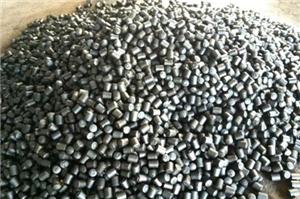Misunderstanding and influence of judging ball quality of ball mill
The quality of ball mill ball not only affects the productivity, but also the ball consumption, and then affects the grinding medium cost. It is wrong to pursue high hardness and low unit consumption. High hardness and low unit consumption are not equal to low cost. Balls with high hardness and low unit consumption are often very expensive. High hardness does not necessarily increase or even decrease productivity。
The quality of ball mill ball not only affects the productivity, but also the ball consumption, and then affects the grinding medium cost. It is wrong to pursue high hardness and low unit consumption. High hardness and low cost are not the same as high hardness and low cost. High hardness does not necessarily increase productivity or even decrease productivity. Only high productivity can reduce unit consumption indicators. Therefore, the primary criteria for selecting steel balls should be high mill productivity and low grinding medium cost. Only with high productivity and low grinding medium cost can good economic benefits be achieved. Economic benefit is a necessary condition for the survival and development of enterprises.
When choosing steel balls, two problems are often ignored: the harder the steel balls are, the better they are, but the proper hardness value; and the density of steel balls is also a problem that can not be ignored. Generally speaking, with the increase of hardness, as long as there is no crushing, the unit consumption of steel ball will decrease; moreover, the ball deformation can be reduced, and the ball deformation in crushing can be small, and the energy can be used to crush ore particles more, which can increase the productivity of the mill. However, the increase of hardness of steel ball can only be moderate, there is an appropriate range, not the harder the better. If only the ball loss is considered, the higher the hardness, the lower the consumption. However, for the productivity of the mill, the productivity increases with the increase of the ball hardness within a certain range, but when the hardness exceeds a certain range, the productivity of the mill will be adversely affected and the productivity of the mill will be decreased. When the hardness of steel ball is too high, there are two reasons
① The steel ball bounces seriously, causing part of the energy loss in the rebound, so the ball energy is not more used for crushing, so it affects the crushing;
② When the hardness of the steel ball is too high, the ball and the ball contact each other and slide severely, which can not effectively mesh the mineral particles between the balls and weaken the grinding effect of the ore particles.
As for the influence of ball density on grinding, generally speaking, the productivity of balls with the same size and with high density is higher than that with low density.
The density of steel ball is affected by three factors
① Steel, cast iron, alloy steel, etc. the density of different materials is different, the density of steel is higher than that of cast iron, and alloy steel is different according to the density and content of main alloy elements.
② Due to the influence of the manufacturing method of steel ball, the structure of rolled and forged steel ball is dense, so the density is high. The structure of cast steel ball, cast iron ball or cast alloy ball is not very dense, even there are pores, so the density is smaller.
③ The density of different crystal structures such as martensite, austenite, bainite and ferrite is also different, which also affects the crystallinity.




